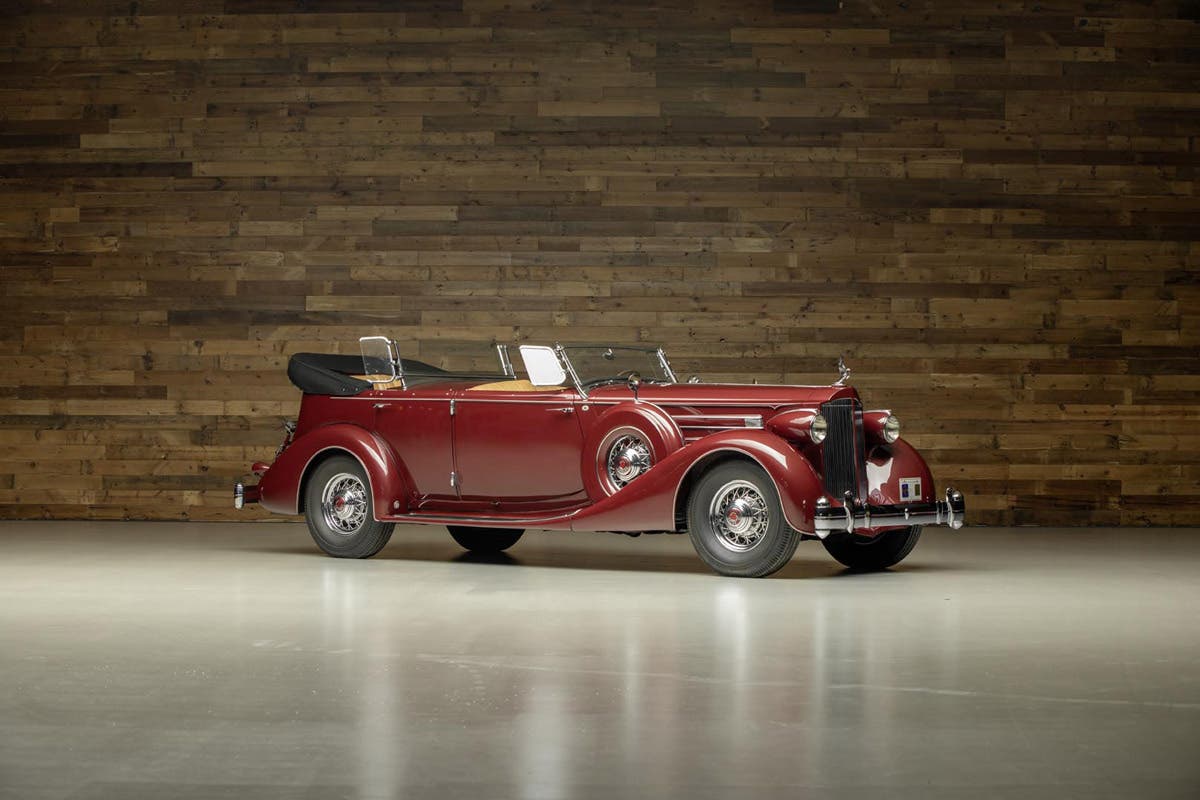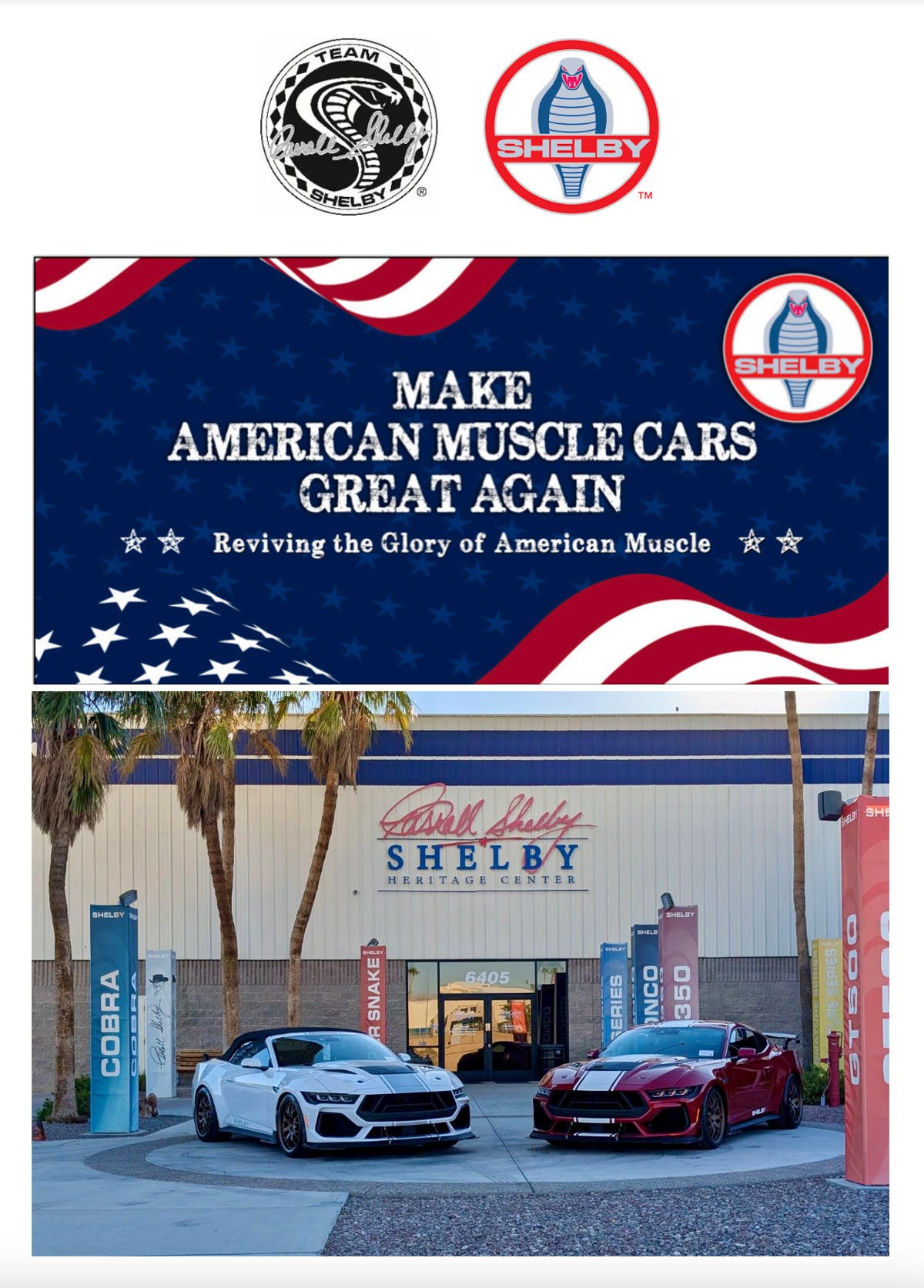Made in Minnesota
How Luverne went from Big Brown to Crimson Over the years, there were 85 automobiles made in 28 different Minnesota cities according to “The Standard Catalog of American Cars 1805-1942.”…
How Luverne went from Big Brown to Crimson
Over the years, there were 85 automobiles made in 28 different Minnesota cities according to “The Standard Catalog of American Cars 1805-1942.” Many were one-of-a-kind cars. Antique car tire maker John Kelsey has three Minnesota-built cars in his private Kelsey Antique Car Museum in Camdenton, Mo. — a Big Brown Luverne, a Packet roadster and a Pan. Kelsey opened the museum in Albert Lea, Minn. (thus the interest in Minnesota cars), and moved it to Missouri in 1954.
Logic would suggest that the companies that manufactured these cars have been out of business for a long time, but that’s not exactly true. Packet closed its doors in 1917, Pan bit the dust in 1921 and the Wolfe operation was over much earlier (1909). Luverne, however, refused to die. After curtailing automobile production in 1917, the company evolved. It became the Luverne Motor Truck Co., the Luverne Fire Apparatus Co. and, later, the Luverne Fire Equipment Co. In 1997, Spartan Motors, Inc. — a maker of motorhomes and emergency vehicles — purchased and merged Luverne Fire Apparatus and Quality Manufacturing. In 2003, Spartan ERV formed Crimson Fire Apparatus.
Founding Luverne
In the beginning, brothers Fenton and Ed Leicher were building buggies in Luverne, Minn., a city in the far southwest corner of the state. They decided that motorcars were the wave of the future. In 1903, they put together a kind of kit car ordered from A.L. Dyke in St. Louis. Apparently that went well and encouraged the Leichers that they could make a go of automobile production. In the mid ’50s, Fenton Leicher recalled that production of automobiles began in 1904 and that the Luverne Automobile Co. was formally established in 1906 with $50,000 of capitalization. Thus began the lengthy tale of what automotive historian Beverley Rae Kimes called “Minnesota’s most distinguished motorcar.”
In 1905, Luverne was cataloging a pair of two-cylinder highwheelers with side-entrance touring or surrey coachwork with bodies largely made of wood. The 20-hp engines for the highwheelers were supplied by Buick and mounted under the body. There was also a 10-hp runabout. The cars were largely marketed in Minnesota and surrounding states, especially to farmers, ranchers, lawyers and doctors. Later, Rutenber and Beaver engines were used.
The Luverne Model A appears to have arrived in 1906 as a 1907 model. The five-passenger touring and three-passenger runabout each listed for $1250. They had a 20-hp two-cylinder engine, also mounted beneath the body. The engine had a 5-in. bore and 5-in. stroke. The same three-speed planetary transmission was carried over from the first two years and chain drive was utilized. The surrey for two to four passengers was on a 78-in. wheelbase. Apparently it had the same engine, but sold for just $950.
There were also three 1908 models. The $650 Model C runabout had a two-cylinder 12-hp engine and a 78-in. wheelbase. The $1250 Model A came in three-passenger runabout and five-passenger touring forms. These shared a 94-in. wheelbase and a 20-hp two-cylinder engine. Late in 1908, a four-cylinder Luverne arrived as a 1909 car, but the highwheelers stayed around for the year.
The 1909 Lurverne line counted six models. The highwheelers included the Model A five-passenger touring for $1250; the Model B five-passenger touring for $900; the Model C four-passenger Surrey for $800; and the Model D two-passenger runabout for $750. All of these had a 24-hp twin and a 100-in. wheelbase. The Model 40 seven-passenger touring listed for $2000 and had a 40-hp four-cylinder engine and 108-in. wheelbase. This car was called the Standard Four.
By 1910, the entire Luverne model line was four-cylinder-powered. There were 30-, 35- and 40-hp models on wheelbases of 108 and 120 in. The largest Model 740 seven-passenger touring sold for $2250. This was the beginning of an effort to concentrate on large and luxurious touring cars and one of these introduced in 1912 was the Model 740 four-cylinder touring with 50 hp and a 126-in. wheelbase. Also marketed in 1912 were the Model 260 and Model 460 roadsters that shared a six-cylinder 60-hp engine and a 128-in. wheelbase The price on each of these big Luvernes was $2750.
Building a bigger Luverne
For 1913, there were two tourings including the four-cylinder 40-hp Model 540 five-passenger on a 124-in. wheelbase and the six-cylinder 60-hp Model 760 seven-passenger on a 130-in. wheelbase. During the 1913 St. Paul Automobile Show, the Model 50 Luverne was promoted as the car that carried railroad baron and Minnesotan James J. Hill, of Northern Pacific Railroad, from the train depot to a posh hotel he built on a mountain in Montana. It seems that the manager of the hotel had written a letter praising the 50-hp car’s mountain-climbing abilities. His endorsement was taken seriously and the car became the Montana Special.
This “Car for the Mountains” was said to have a “tremendously powerful engine with perfect lubrication, a heavy frame and a 126-in. wheelbase, springs that are positively guaranteed for five years, high wheels, big 36x4-1/2-in. Non-Skid tires, ample road clearance and a handsome design with luxurious finish and equipment.” The car was advertised as being “especially designed and equipped for the Montana trade” and Luverne paid the freight for its customers.
A six-cylinder car with the unusual name “Big Brown Luverne” was offered from 1914 through 1916. It was a 60-hp job on a 130-in. wheelbase that came as a seven-passenger touring for $2500 and as a two-passenger roadster for $2250. It had a solid German silver radiator and Old Spanish brown leather upholstery with horsehair stuffing. Most cars of this era were painted with black paint because it dried faster. The Minnesota-built car was finished in a color called Luverne Brown to make it stand out. Thus, the unusual model name.
The Big Brown Luverne 60 included a host of standard equipment including a brown top with Jiffy curtains and boot, a ventilating windshield, gas gauge, clock, auxiliary seats, footrest, Klaxon horn, auto chime exhaust horn, spare tire carrier, front bumper, tire chains, lifting jack, blow-out shoe, tool roll with hand tools, luggage boxes, tire repair outfit, tire pump, folding pail, funnel and electric hand lamp. The car weighed in at 3700 lbs.
The manufacturer claimed, “The Luverne Six is a large, high-powered, luxuriously finished and equipped car of the very latest design embodying many original and distinctive features, which are very attractive and valuable.” According to an advertisement, “It is easy riding, quiet running and dependable. Last but not least, it is very light on fuel consumption, giving an average mileage of 13 to 17 miles to the gallon of gasoline under normal conditions. Anyone who is familiar with six cylinder cars will appreciate the importance of this feature.” Luverne boldly said, “Every owner of a Luverne Six will recommend the car.”
From passenger cars to fire trucks
The brothers were never very interested in mass production and every Luverne was literally built by hand, including the Big Brown six. By 1916, they knew the future was in building closed cars. Only two Luvernes were built in 1917. Legend has it that the $2250 Big Brown Luverne Special Speed Roadster was built only to race at Indianapolis Motor Speedway. A string of problems kept the car from making it into the 500 and it was cataloged as a sports roadster.
With no nationwide sales and no desire to build closed cars, Luverne set off in a new direction. Very soon after the Leichers had built their first car, they had also started building a variety of special-order vehicles including sleeper cars and the aluminum-bodied racing roadster. Luverne had also built a fire truck as early as 1912 and was said to be responsible for making the first tilting-box dump truck during the same era. A motor hearse was also in its 1915 catalog. With total production through 1917 totaling only 300 or so vehicles, special orders were few. Probably only a handful of its beautiful carved-side funeral vehicles were made.
The Leichers knew they couldn’t compete with the big automakers’ nationwide distribution systems and dealer networks. They also understood the truck industry was favoring purpose-built units. So, Luverne started making trucks from 1918-1923. A 1923 Luverne three-ton van is pictured in G.N. Georgano’s “Complete Encyclopedia of Commercial Vehicles.” According to the British historian, “After 1923, they found that there was too much competition from larger manufacturers in this field, too, and they concentrated on making fire apparatus on other peoples’ chassis, in which business they are still active today.”
A 1923 Luverne fire truck originally purchased by the Dell Rapids (South Dakota) Volunteer Fire Dept. in 1923 can be seen at the Pumphouse Museum in Delmont, S.D. According to an article by Loretta Sorenson published in Farm Collector magazine in September 2013, the Delmont Volunteer Fire Dept. purchased the used Luverne fire truck from W.H. Griffen of Luverne, Minn., for $6750 in 1941. The truck was equipped with a 250-gallon-per-minute triple-action pump. Its chemical tank was supported by 100 feet of hose, ladders and extinguishers. Even as a secondhand addition to the fire department’s fleet, the nearly 20-year-old truck was a major step forward in technology. The 1923 Luverne replaced the Delmont Volunteer Fire Dept.’s hand-drawn chemical cart.
Apparently, refurbishing older trucks for small towns was a regular part of the Luverne Fire Apparatus Co.’s business. A 1931 Chevrolet with a Luverne body belongs to members of the volunteer fire department in Allenton, Wis., who restored the truck. This truck was also purchased as a refurbished unit sometime in the 1940s.
“Our 1931 Chevy Luverne fire truck was used and owned by the Allenton Fire Dept. and sold back in 1966,” said Chief John P. Breuer. “It was later purchased and resurrected by six members personally and restored. Now, there are only four left in the group and we have donated the truck back to the department to keep as a part of their history and heritage.”
In addition to its small-town business, Luverne built trucks for big cities such as Chicago, Cleveland, and Tulsa. The Chicago Fire Dept. has pictures of its Luverne units posted online. These units include late-model Spartan/Luverne and Crimson/Luverne trucks.
In 1997, Spartan Motors, Inc., purchased Luverne Fire Apparatus of Luverne. Minn. and Quality Mfg. of Talladega, Ala. Spartan Motors, Inc. was a world leader in the design and manufacturing of custom chassis for motor homes, fire trucks, transit buses, step vans and other specialty vehicles. Quality Mfg. was a company that stressed a philosophy of providing quality products and services. It built units for Dallas, Birmingham and Atlanta. In 2003, the two companies were merged to form a company called Crimson Fire. As a result, Luverne lives on, albeit with a different vehicular purpose.








